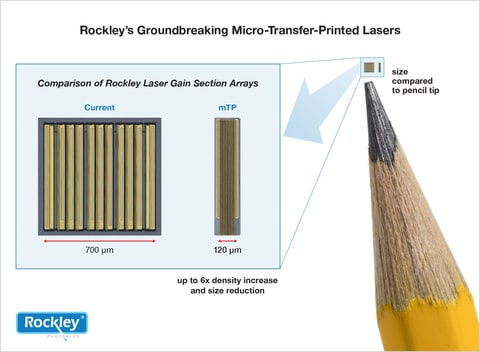Silicon-photonics-based bio-sensing chips can help designers to make compact devices for the detection and measurement of multiple biomarkers. The IC can also enable engineers to pack more features in smart glasses and XR/AR/VR headsets.

Rockley Photonics has released the world’s smallest Laser Spectrometer chip for health monitoring applications. It is the world’s first micro-transfer-printed (mTP) silicon-photonics-based laser for commercial applications. The mTPs have upto 6x higher density than any other existing product which can enable engineers to create smaller wearable devices for XR/AR/VR applications.
According to the company, the laser-based solution has a smaller area than LED-based spectrometer. The potential applications for this higher-density and smaller-footprint chip technology extend beyond biosensing and health monitoring into other areas, such as ultra-small wearables, clothing, or XR/VR/AR headsets and glasses. The IC offers photonic chip size reduction and additional reductions in chip manufacturing costs.
This mTP of silicon-photonics-based lasers has the world’s highest-density broad-wavelength laser spectrophotometer chip. Apart from enabling smaller wearables, this chip can also lower manufacturing costs and enable thinner, smaller footprints and higher-density chip designs. These attributes are powerful benefits for use in consumer and MedTech devices and could facilitate the integration of biosensing technology into future tiny wearables.
“Applying the micro-transfer printing process to the production of integrated lasers is a huge breakthrough that we believe will have a tremendous impact on wearable biosensing and on the photonics industry as a whole,” said Dr. Andrew Rickman, chairman and chief executive officer of Rockley. “We arguably have some of the most sophisticated photonics technology in the world, and this unprecedented level of miniaturization raises the bar even further. By creating biosensing chips that are smaller, lower-cost, and more efficient, we can continually improve our wearable biosensing products and deliver novel, relevant, and more powerful ways to monitor our health.”







